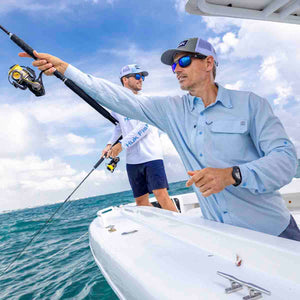The Grounds
In the not-so days of old, we used to get together our nighttime gear when we wanted to chase the mysterious swordfish. Well, that was too easy. How can we catch a fish that lurks nearly 2,000-feet below the surface of the ocean, whose physiological makeup thrives in the dark—how can we catch it in the middle of the day?
Daytime swordfishing can be mind-numbing. Hours of vigilantly watching a rod tip. When there’s nearly a half-mile of line between you and the fish, the indication of even a monster swordfish is minor. But, when you get a bite, start to retrieve some of that line, and the rod doubles over—it’s a thrill unique to the practice of daytime swordfishing. Unlike seeing a big blue marlin eat a lure, or a small sailfish peck at a long rigger ballyhoo, you don’t immediately know what is on the other end of the line.
Locations change, but tactics remain fairly similar for daytime swordfishing. With its rise in popularity, anglers are making daytime drops in south Florida, the Gulf of Mexico, and the depths of the mid-Atlantic. Find a canyon or a hump in 1,500-2,000 feet of water, rig a bait, and make a drop. Just make sure your crimps don’t slip.







